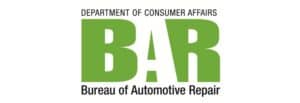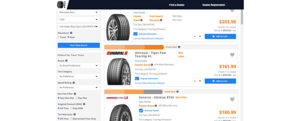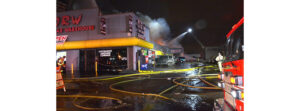The revised regulations reflect the state’s latest COVID-19 public health guidance; the updates include changes to face coverings and physical distancing requirements
Sacramento, Calif.—Following the June 17 vote by the Occupational Safety and Health Standards (OSHA) Board to adopt the revised COVID-19 Prevention Emergency Temporary Standards, Gov. Gavin Newsom signed an executive order to allow the revisions to immediately take effect on June 17.
The revised regulations reflect the state’s latest COVID-19 public health guidance. The updates include changes to face coverings and physical distancing requirements.
Background
Q: Why did Cal/OSHA propose revising the COVID-19 Prevention Emergency Temporary Standards?
A: Cal/OSHA proposed revisions to the COVID-19 emergency temporary standards (ETS) to reflect the availability of vaccinations to limit workplace transmission, to revise requirements in light of updated Centers for Disease Control and California Department of Public Health (CDPH) face covering guidance, and to provide options for employers to make a safe transition from physical distancing and face covering mandates to more normal operations.
Q: What is the status of the ETS?
A: The ETS took effect on November 30, 2020. On June 3rd, the Occupational Safety and Health Standards Board (Standards Board) voted to adopt proposed revisions to the ETS, but with reservations about some provisions. The Standards Board also voted to form a subcommittee to advise on further revisions to the ETS in light of these reservations.
On June 9, the Standards Board voted to withdraw the proposed revisions from OAL review. The Division offered to make further revisions in light of updated CDPH face covering guidance, and to address key concerns raised by Board members and stakeholders at the June 3 meeting. On June 17, 2021, the Occupational Safety and Health Standards Board (Standards Board) voted to update the COVID-19 Emergency Temporary Standards (ETS), 8 CCR §§ 3205-3205.4. Executive Order N-09-21 permitted the revised ETS to take effect the same day.
What Changed
Q: What are the important changes in the June 17 revised ETS?
A:
- Fully vaccinated employees without symptoms do not need to be tested or quarantined after close contacts with COVID-19 cases unless they have symptoms.
- No face covering requirements outdoors (except during outbreaks), regardless of vaccination status, though workers must be trained on CDPH recommendations for outdoor use of face coverings.
- Employers may allow fully vaccinated employees not to wear face coverings indoors, but must document their vaccination status. There are some settings where CDPH requires face coverings regardless of vaccination status. In outbreaks, all employees must wear face coverings indoors and outdoors when six-feet physical distancing cannot be maintained, regardless of vaccination status.
- Employers must provide unvaccinated employees with approved respirators for voluntary use when working indoors or in a vehicle with others, upon request.
- Employers may not retaliate against employees for wearing face coverings.
- No physical distancing or barrier requirements regardless of employee vaccination status with the following exceptions:
- Employers must evaluate whether it is necessary to implement physical distancing and barriers during an outbreak (3 or more cases in an exposed group of employees)
- Employers must implement physical distancing and barriers during a major outbreak (20 or more cases in an exposed group of employees)
- No physical distancing requirements whatsoever in the employer-provided housing and transportation regulations.
- Where all employees are vaccinated in employer-provided housing and transportation, employers are exempt from those regulations
- Employers must evaluate ventilation systems to maximize outdoor air and increase filtrations efficiency, and evaluate the use of additional air cleaning systems
Q. Are there requirements from the November 2020 ETS that will remain in place?
A: Yes, including:
- An effective written COVID-19 Prevention Program.
- Providing effective training and instruction to employees on the employer’s prevention plan and their rights under the ETS.
- Providing notification to public health departments of outbreaks.
- Providing notification to employees of exposure and close contacts.
- Requirements to offer testing after potential exposures.
- Requirements for responding to COVID-19 cases and outbreaks.
- Quarantine and exclusion pay requirements.
- Basic prevention requirements for employer-provided housing and transportation.
Physical Distancing
Q: Are all physical distancing requirements in the revised ETS gone?
A: The revised ETS is similar to rule changes for the general public in California that eliminate physical distancing and barrier requirements regardless of vaccination status. There are several exceptions that may apply:
- Nothing in the revised ETS prevents employers from implementing additional protective measures than are required, including the use of physical distancing and barriers.
- Employers are under an ongoing requirement to assess workplace hazards and implement controls to prevent transmission of disease. There may be circumstances in which employers determine that physical distancing is necessary in their workplace.
- During an outbreak (3 or more employees in an exposed group), employers are required to evaluate whether physical distancing or barriers are necessary to control the transmission of COVID-19.
- Physical distancing and barriers must be used in a major outbreak (20 or more employees in an exposed group) for all employees, regardless of vaccination status.
Respirators
Q: What is an employer’s obligation to provide respirators?
A: An employer must provide respirators in two scenarios: (1) to any unvaccinated employee who works with others indoors or in a vehicle and who requests one and (2) where there is a major outbreak, to any employees in the exposed group for voluntary use. The respirator must be the right size, and the employee must receive basic instruction on how to get a good “seal,” or fit.
Q: What does it mean to “provide respirators upon request”?
A: An employer must be able to provide the respirator upon request. Initially, an employer may either stock respirators and offer them to employees or may poll workers to determine which employees wish to be provided a respirator before obtaining them. However, once an employer has established that it has employees who wish to wear respirators, it should have enough on hand of the correct size and type to fulfill reasonably foreseeable requests upon demand. If an employee prefers to select and purchase their own respirator, an employer may permit this alternative, as long as the employer reimburses the employee in a timely manner.
In a major outbreak, respirators must be offered to employees regardless of vaccination status and without waiting for a request from the employee. The employer must offer respirators immediately upon determining a major outbreak is underway.
An employer is under a continuing obligation to provide respirators to eligible unvaccinated employees at any time they communicate to the employer their desire to wear one.
Q. How soon does a respirator need to be provided after an employee requests it?
A. After initial implementation as described above, employers should provide requested respirators to unvaccinated employees as soon as possible.
Q. What if more employees request respirators than the employer anticipates and the employer runs out of respirators? Will Cal/OSHA cite the employer?
A. Cal/OSHA will not cite employers who make a good faith estimate and effort to provide respirators as soon as possible to employees that request them. If an employer runs out of respirators, they should order more respirators immediately. Cal/OSHA lists some but not all vendors that sell N95 respirators in large quantities (vendors able to fulfill orders of more than 100,000 units) at https://www.dir.ca.gov/dosh/wildfire/List-of-N95-Vendors.pdf.
There are many vendors who have N95s available in smaller quantities.
Q: Why is Cal/OSHA requiring respirators be offered to unvaccinated persons? Isn’t this different from CDC and federal OSHA guidance?
A: Under CDC and federal OSHA guidance, unvaccinated persons are to wear face coverings and physically distance indoors. Cal/OSHA is requiring voluntary respirators because California is phasing out physical distancing, because a well-fitting respirator reduces the risk of infection better than physical distancing alone, and because respirators are readily available. The ETS provides this as an alternative protection for unvaccinated employees.
Q: How often must an employer provide an employee with a new respirator?
A: For voluntary use, the need to replace a respirator varies with use and environment. Filtering facepiece respirators are disposable respirators that cannot be cleaned or disinfected. They must be replaced if they get damaged, deformed, dirty, or difficult to breathe through. A best practice is to replace filtering facepiece respirators at the beginning of each shift. Employers should follow the manufacturer’s instructions. CDC recommends replacing a disposable filtering facepiece respirator, such as an N95, after it has been taken on and off five times. Filtering facepiece respirators may not fit correctly after repeated use.
Face Coverings
Q: Who has to wear face coverings?
A: Face coverings are required indoors and in vehicles for unvaccinated employees. Employees in certain indoor settings must wear a face covering regardless of vaccination status if required by CDPH order. As of June 15, those indoor settings where CDPH requires face coverings include public transit, K-12 educational facilities, health care and long-term care settings, correctional and detention facilities, and shelters (homeless or emergency shelters and cooling centers).
Though face coverings are not required outdoors, employers must communicate to workers that face coverings are recommended for unvaccinated persons outdoors where six feet of physical distancing cannot be maintained. Employers must provide face coverings to unvaccinated persons and make them available to vaccinated persons upon request.
Q: Are there exceptions to wearing face coverings indoors?
A: Yes. The most common exceptions for unvaccinated persons are:
- When alone in a room or vehicle
- When eating and drinking
- When an accommodation is required
- When job duties make a face covering infeasible or create a hazard
Q: Are workers protected from retaliation if they choose to wear a face covering, even if not required to do so?
A: Yes. Employers cannot retaliate against workers for wearing face coverings, including when the worker is wearing a face covering voluntarily.
Vaccines
Q: Is documentation required for a fully vaccinated employee to work without a face covering indoors?
A: Yes. Vaccination status must be documented. The revised ETS does not specify a particular method. The employer must record the vaccination status for any employee not wearing a face covering indoors and this record must be kept confidential. Acceptable options include:
- Employees provide proof of vaccination (vaccine card, image of vaccine card or health care document showing vaccination status) and employer maintains a copy.
- Employees provide proof of vaccination. The employer maintains a record of the employees who presented proof, but not the vaccine record itself.
- Employees self-attest to vaccination status and employer maintains a record of who self-attests.
Nothing in the revised ETS prevents an employer from requiring all employees to wear a face covering instead of having a documentation process.
Q. What if the employee declines to state their vaccination status
A: Under the ETS, an employer is not obligated to require employees to submit proof of being fully vaccinated. Absent such a requirement, an employee has the right to decline to state if they are vaccinated or not. In that case, the employer must treat the employee as unvaccinated and must not take disciplinary or discriminatory action against the employee.
Testing
Q: What are the testing requirements of the revised ETS?
A: Employers must offer testing at no cost to employees during paid time to:
- Symptomatic unvaccinated employees, regardless of whether there is a known exposure. This is a new requirement.
- Unvaccinated employees after an exposure.
- Vaccinated employees after an exposure if they develop symptoms.
- Unvaccinated employees in an outbreak.
- All employees in a major outbreak.
Outbreaks
Q. How will Cal/OSHA ensure employees are adequately protected if there is a surge in COVID-19 cases?
A: The revised ETS requires employers to implement more protective requirements if an outbreak or major outbreak occurs in a workplace. Cal/OSHA also has the option of proposing changes to the ETS one additional time, if necessary.
Enforcement
Q: Will Cal/OSHA issue citations for employers who do not implement all provisions of the June 17 Emergency Temporary Standards immediately?
A: Employers should implement the June 17 ETS as soon as possible. For those unable to implement the ETS immediately, the employer must implement or retain alternative controls to ensure the health of employees. If an employer is continuing to comply with the November ETS while implementing the revisions, Cal/OSHA will not cite the employer.
With respect to face coverings, the employers can comply with the June 17 ETS by requiring face coverings for all employees while they gather documentation to allow fully vaccinated persons to go without face coverings.
If an employer is unable to provide NIOSH-approved respirators on the effective date of the ETS revisions, it is particularly important that the employer take alternative measures to protect unvaccinated employees until respirators are available.








Comments are closed.